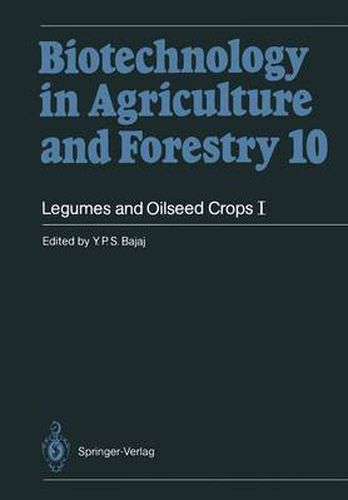Readings Newsletter
Become a Readings Member to make your shopping experience even easier.
Sign in or sign up for free!
You’re not far away from qualifying for FREE standard shipping within Australia
You’ve qualified for FREE standard shipping within Australia
The cart is loading…






This title is printed to order. This book may have been self-published. If so, we cannot guarantee the quality of the content. In the main most books will have gone through the editing process however some may not. We therefore suggest that you be aware of this before ordering this book. If in doubt check either the author or publisher’s details as we are unable to accept any returns unless they are faulty. Please contact us if you have any questions.
Legumes and oilseed crops are a rich source of protein and energy. The major objectives in grain-legume breeding are to increase grain yield, protein quantity and quality and digestibility, and to decrease toxic fac- tors, seed hardness and cooking time. Similarly, oilseed crops such as brassicas and peanut share somewhat similar genetic improvement goals, but suffer from susceptibility to a number of pathogens and diseases. In spite of the best efforts through conventional breeding, their yield has been virtually static, with no significant breakthrough. The lack of genetic variability in the base population has been considered to be a major limiting factor for the slow progress made in the improvement of these crops. The desired goals can be achieved by incorporating addi- tional genetic variability in the existing germplasm. The protein and oil contents which are genotypically oriented can be enhanced further by suitable crosses. In this regard, progress made during the last decade, in the area of in vitro manipulation and recombinant DNA technology, holds promise for the improvement of these crops. Among the oilseed crops, Brassica spp. , soybean and sunflower have been well studied, wherein haploids, somaclones, somatic hybrids, cybrids and transformed plants have been produced. Oilpalm is one of the best examples where micropropagation is being commercially prac- ticed. Regarding legumes, though there is extensive work on forages, such as Medicago and Trifolium, much needs to be done on food legumes.
$9.00 standard shipping within Australia
FREE standard shipping within Australia for orders over $100.00
Express & International shipping calculated at checkout
This title is printed to order. This book may have been self-published. If so, we cannot guarantee the quality of the content. In the main most books will have gone through the editing process however some may not. We therefore suggest that you be aware of this before ordering this book. If in doubt check either the author or publisher’s details as we are unable to accept any returns unless they are faulty. Please contact us if you have any questions.
Legumes and oilseed crops are a rich source of protein and energy. The major objectives in grain-legume breeding are to increase grain yield, protein quantity and quality and digestibility, and to decrease toxic fac- tors, seed hardness and cooking time. Similarly, oilseed crops such as brassicas and peanut share somewhat similar genetic improvement goals, but suffer from susceptibility to a number of pathogens and diseases. In spite of the best efforts through conventional breeding, their yield has been virtually static, with no significant breakthrough. The lack of genetic variability in the base population has been considered to be a major limiting factor for the slow progress made in the improvement of these crops. The desired goals can be achieved by incorporating addi- tional genetic variability in the existing germplasm. The protein and oil contents which are genotypically oriented can be enhanced further by suitable crosses. In this regard, progress made during the last decade, in the area of in vitro manipulation and recombinant DNA technology, holds promise for the improvement of these crops. Among the oilseed crops, Brassica spp. , soybean and sunflower have been well studied, wherein haploids, somaclones, somatic hybrids, cybrids and transformed plants have been produced. Oilpalm is one of the best examples where micropropagation is being commercially prac- ticed. Regarding legumes, though there is extensive work on forages, such as Medicago and Trifolium, much needs to be done on food legumes.